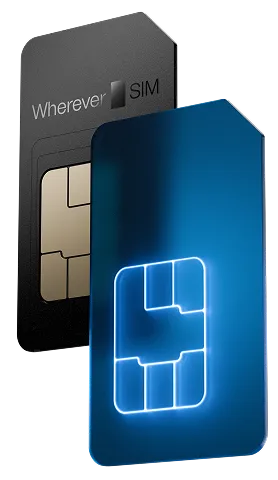LoRaWAN: Energy-efficient technology for IoT projects
LoRaWAN is the abbreviation for Long Range Wide Area Network and covers the entire network structure of a wireless technology that was specially developed for IoT applications.
What is LoRaWAN and how does it work?
LoRaWAN enables the energy-efficient transmission of data over longer distances. This technology was developed specifically for the Internet of Things (IoT) and Industrial Internet of Things (IIoT) and is designed to enable sensors to operate for several years without having to change batteries, for example. LoRaWAN would therefore significantly reduce maintenance costs in IoT projects and enable devices to be operated even in inaccessible locations.
LoRaWAN also makes it possible to manage several hundred sensors within a network and to process the associated sensor data.
Key advantages of LoRaWAN for IoT applications:
- Long range: up to 15 km in rural areas and 2-5 km in urban environments
- Extremely low energy consumption: Enables years of battery operation of sensors
- Cost-efficient infrastructure: fewer base stations required than with other technologies
- Optimized for small data volumes: Ideal for sensor data that is transmitted at intervals
LoRaWAN compared to other IoT wireless technologies
The applications in the Internet of Things are diverse. Accordingly, one technology alone is not enough to meet all planned scenarios. LoRaWAN is positioned as the ideal solution for applications in which low data throughputs need to be transported as cost-effectively as possible - especially where conventional mobile radio technologies such as GSM, LTE or 5G cannot be used for networking.
Use cases for modern LoRaWAN radio technology
A classic application example is meters for water, gas, electricity or heat (smart metering). LoRaWAN transmits the readings of heat, gas or water meters by radio - when and as often as you want. A pulse-capable wMBus, Modbus or LoRaWAN meter is usually required for remote reading. The remotely read meter readings are then transferred to your own systems via an interface.
Other typical application scenarios for LoRaWAN:
- Smart CityIntelligent street lighting, parking lot monitoring, waste management
- Smart FarmingSoil moisture and weather measurement, livestock monitoring
- Smart BuildingRoom climate control, presence detection, energy management
- Supply chains: Asset tracking, condition monitoring of goods
- Environmental monitoring: air quality, water level, noise pollution
Setting up a LoRaWAN network
A LoRaWAN network consists of four main components:
- end devices (nodes): Sensors or actuators with LoRa wireless technology
- Gateways: Receive the radio signals from the end devices and forward them to the Internet
- Network server: Manages the network and filters duplicate data packets
- Application server: Processes the data and makes it available for applications
Integration with other IoT technologies
LoRaWAN can be perfectly combined with other IoT technologies. While LoRaWAN enables data collection over long distances, M2M SIM cards can be used to connect gateways to the internet. This creates hybrid solutions that make optimum use of the advantages of different technologies.
Holistic IoT solutions with wherever SIM
For your IoT projects, we not only offer M2M SIM cards for classic mobile radio connections, but also support you in integrating various IoT technologies - from mobile radio to NB-IoT and LoRaWAN.

